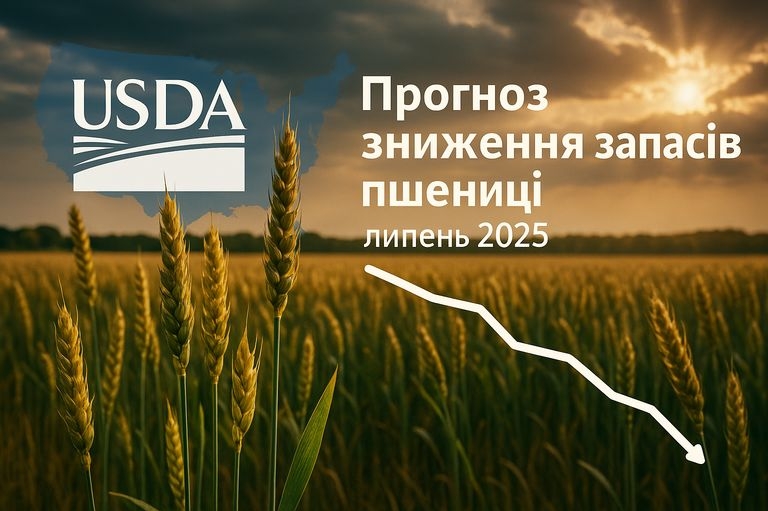USDA lowers wheat stock forecast, but prices fall on trade uncertainty

The USDA's July supply and demand report lowered its forecast for ending global wheat stocks for the 2025/26 MY and raised its estimate for global consumption. Despite the worsening balance, wheat prices fell by 0.1% to 4.3% due to pressure from trade uncertainty and news of possible additional tariffs from the Trump administration.
Dynamics of stock exchange quotes:
-
SRW (Chicago) : –1.7% to $198.7/t (+0.9% since June report);
-
HRW (Kansas City) : –0.3% to $185.3/t (–6.1%);
-
HRS (Minneapolis) : –4.3% to $219.8/t;
-
Euronext (Paris) : –0.1% to €201/t or $234.75/t (+0.8%).
USDA Forecast Update:
-
Ukraine : production reduced by 1 million tons to 22 million tons (–1.4 million tons by 2024/25 MY); exports – to 15.5 million tons (–0.4 million tons).
-
Canada : production reduced by 1 million tons to 35 million tons.
-
EU : forecast increased by 2 million tons to 137.25 million tons, exports reduced by 2 million tons to 32.5 million tons.
-
Russia : production increased by 0.5 million tons to 83.5 million tons, exports to 46 million tons (+0.5 million tons).
-
USA and China : the balance remained almost unchanged, although the drought in China continues - a correction is expected in the next report.
Changes in the forecast for 2025/26 MY:
|
Indicator |
July 2025 |
June 2025 |
Difference |
|
Beginning stocks |
263.59 million tons |
263.98 million tons |
-0.39 |
|
World production |
808.55 million tons |
808.59 million tons |
-0.04 |
|
World consumption |
810.62 million tons |
809.8 million tons |
+0.82 |
|
World exports |
213.06 million tons |
214.33 million tons |
-1.27 |
|
World imports |
208.84 million tons |
210.93 million tons |
-2.09 |
|
Ending stocks |
261.52 million tons |
262.76 million tons |
-1.24 |
Market risks:
-
US trade policy, in particular the risk of new tariffs, is causing concerns among traders.
-
The futures market has also come under pressure: investors are reducing short positions, trying to protect themselves from unpredictable changes in global trade.
Despite the worsening balance, the wheat market is more responsive to political risks than fundamentals. In the Black Sea region, prices will remain under pressure from a high harvest in the EU, strong supply from the Russian Federation, and increasing competition from Ukraine, which is looking for alternatives to the European market after the introduction of quotas.


